Better Sailing


Sailboat Maintenance Checklist
Whether your sailboat is stationary for a long time, or whether you live and travel with it, there are several key things to keep an eye on. Regular maintenance of your sailboat will ensure more years of use and better performance. Furthermore, your sailboat will be safer and it will keep its value longer. Below you’ll find a checklist for routine mission-critical checks. Some of these checks have to be performed both daily and monthly. Others require monthly and annual checks, but always make sure to inspect everything, thoroughly. Follow the steps of the list and ensure trouble-free sailing.
The engine of your sailboat is something that requires a lot of care and attention. Inspect regularly the condition of the engine and look for corrosion, as well as make sure that the outboard motor is securely in place. Daily maintenance of the engine consists of:
- Check the engine’s oil level.
- Check the belt tension.
- Transmission fluid level.
- Inspect pulleys as well as the alignment.
- Alternator and water pump belts have to be tight.
And now we’re moving on to the monthly maintenance of the engine which includes:
- Change the oil and filter of the engine.
- Clean the thru-hull.
- Clean the siphon break.
- Fill up coolant and antifreeze if needed.
- Check pump, impeller, and raw water strainer.
Finally, let’s see the annual maintenance of your sailboat’s engine:
- Test the batteries.
- Check the diesel tank for damages.
- Inspect the shaft and propeller.
- Change primary and secondary fuel filters.
- Bleed the fuel system.
Check the Bilge and Bilge Pump
The bilge is situated at the bottom part of the sailboat and collects excess water. The bilge pump is the piece that removes water from the bilge. If the bilge pump is damaged, your sailboat can even be sunk! In order to keep yourself and your boat safe, check the pump hoses for debris that could cause clogs. In case you find a leak, the first thing you should do is to taste the water. Is it freshwater or saltwater? So, every few days survey the bilge for oil, water, or fuel leaks. Moreover, it’s important to lift a central floorboard often just to ensure that the bilge is dry. Leaks can be caused by different areas. For instance, leaks that come from holes in the deck, loose hatch seals, or improperly sealed windows.

>>Also Read: Common Sailboat Problems and How to Fix Them
Always inspect probable damages to your sailboat, even if it’s in a well-maintained condition. It’s recommended to make monthly and yearly checks to make sure it stays in perfect condition. Firstly, inspect the hull, keel, and rudder and look for any damages, cracks, and blisters. Then, make sure that the drain plugs are in place. Apply gel coat restorer or a rust inhibitor to the scratches or to the rusting of your sailboat’s bodywork. Moreover, you will also need to remove your sailboat from the water, once a year. It’s easier to do this during the winter months and although this can be a costly thing to do, is really worth it. Like this, you’ll get a better image of the hull’s condition and fix anything that needs repair. Finally, remember to annually carry out anti-fouling and any re-painting or zinc replacement.
Raw Water Strainers and Freshwater Levels
Don’t forget to check your seas strainers! If you’re running your generator, heat/air conditioning, or anything that requires saltwater or raw cooling system to function, you might want to surveil your strainers. Furthermore, inspect the water flow on all of the raw water cooling systems. You have to see an easy flow of heating, Genset, refrigeration, and aircon cooling water out of the system. If the freshwater system, which is pressurized by an accumulator tank gets too low, then it throws the whole system out and thus it will not be working properly. So, it’s imperative that you never let your water tanks empty.
As for the electrical system it is recommended to check it every month. Check the condition of the wires, if they’re neatly secured, dry, and inspect their casings to see if they are intact. However, there are some sailboats that have their generator running periodically to charge them up. So, keep an eye on your battery’s charge levels. Also, the electrical lines must be in good condition to keep the electrical system on your sailboat up and running. Any damaged lines could provoke a fire hazard. To prevent electrical lines from erosion, remember to keep them clean, and use a digital multimeter to make sure everything’s working properly.
Without the battery, which is the heart of your sailboat, the engine won’t start, nor the electrical components will work. So, take good care of the battery and check it once a year, or more often, i.e. during the boating season. Keep in mind that batteries naturally degrade over time, so this is a must task to perform. You can check the battery’s charge with a digital multimeter, and the connections for corrosion. Moreover, test the batteries and check if they’re clean and dry. There are sailboats that have solar and wind power that continuously tops up the batteries. Other sailboats depend on having the generator running periodically in order to charge them up.
In case you’re running the generator you will need to check its vitals at least once a week. So, check the oil, belt, water level, and inspect for leaks and loose connections. You can see the leaks easier if you keep the Genset clean.
Oil and Filter
Remember to regularly change the oil and oil filter. In case you don’t, then it is possible to provoke damage to the engine parts. In order to change the oil, let the engine run for about seven minutes, then turn it off. Subsequently, place a container under the drain plug. Take out the drain plug and loosen the screw that is located above. Then, let the oil drain out for about 30 minutes. During this process change also the oil filter. After the oil drains out, replace the drain plug and tighten the screw. Finally, fill the engine with the proper oil.
Fridge and Freezer Temperature
The effectiveness of a fridge often depends on the temperature of the sea. Many boat refrigeration systems get a charge over time which makes them less effective. Therefore they slowly reduce the temperature gauge. So, it is recommended to change the temperature gauge at least once a week. The temperature of the fridge has to be below 5 degrees and the freezer below freezing.
Sails and Rigging
Sails and rigging have to be checked at least once a month. Firstly, look out for any chaffing where the headsail sheets attach to the clew, and also to the traveller and boom vang. Secondly, examine thoroughly if there’s any wear on the mainsail. Then, check if the cotter pins and shroud are in place and in good condition. Finally, make sure that the turnbuckles and pelican hooks on the lifeline are in good condition.
Summary- Maintenance List
Your sailboat’s maintenance needs to be taken seriously. When you’re regularly maintaining your sailboat, you also ensure its life spanning. Some basic items that require constant maintenance are the generator, the battery, the plumbing, the bilge, oil, and the fridge and fluid levels, among others. However, there are others that require monthly or yearly maintenance, such as the engine, the electrical system, the sails and rigging, the propeller, zippers, hinges, upholstery, etc. In case you can’t repair or check the condition of these parts, then consider contacting a professional to help you with the maintenance process.
Peter is the editor of Better Sailing. He has sailed for countless hours and has maintained his own boats and sailboats for years. After years of trial and error, he decided to start this website to share the knowledge.
Related Posts

Atlantic vs Pacific: Which is More Dangerous for Sailing?

Why Do Sailboats Lean?

How Does a Boat Sail Upwind? Unveiling the Mechanics of Against the Wind Sailing

How Does Sailing Work? The Physics of Sailing
- Buyer's Guide
- Destinations
- Maintenance
- Sailing Info
Hit enter to search or ESC to close.

Maintenance Log and Captain’s Log Templates
We’ve been using a couple of spreadsheet templates on m/v Positive Latitude for a while now to capture important information we want to track about our cruises (Captain’s Log) and all the maintenance we perform on the boat (Maintenance Log). There are a lot of good applications that accomplish the same thing but we want to customize and we don’t want to start over when an application we like is no longer supported. If you are interested in receiving the templates for free, fill out the form below and we’ll send you a link. An understanding of spreadsheets is useful or at least the desire to jump in and figure it out. Feel free to modify for your own use. If you don't use Excel, the templates seem to work fine in Google Sheets and Libre Calc.
Maintenance Log
Captain’s Log
The workbook contains worksheets for: Deck Log - includes calculations for entry Daily Time Underway as well as a summary of Total Hours Underway, Total Days Underway, and Total Miles Marina and Anchorage Log - includes calculations for each entry for Total Cost, and a summary breakdown by # of Stays, # of Days, and Total Cost by type (Marina, Mooring, Anchorage, Yacht Club, and Free Dock) Fuel Log - includes calculations for entry Price per Gallon, Hours Since Last Fill, and Gallons Per Hour as well as overall Average Gallons per Hour. Pumpout Log - includes calculations on each entry for Days Since Last Pumpout as well as Total Cost.
The grey boxes on the worksheets are calculated fields so you shouldn't enter any info in them directly - those get updated automatically as you enter new information. We start a new log file each year and store our log files in the cloud (One Drive is what we use, but there are many options). We can update using a laptop, a tablet, or even our phones, and the files get synced across our devices. However, you can just keep the file locally on your computer if you'd prefer.

Do you operate a yacht? Our app is perfect for you
Vessel maintenance log - what it is & how to manage it.
To avoid unexpected surprises related to your vessel, it’s no secret that maintenance should be one of your top priorities. However, maintenance is includes a lot more than your regular checks, visual inspections and hasty examinations.
Depending on the size and built of your yacht, there’s a significant number of tasks that need to be performed regularly to ensure its safety and performance.
While maintenance mainly falls upon the engineer of the vessel, their ability to perform their tasks effectively affects the whole crew. This is why keeping a vessel maintenance log is crucial if you want your routine to be efficient and precise.
In this article, we talk about the importance of a vessel maintenance log and give you a brief overview of its contents. To this end, we provide the main benefits of a vessel maintenance log and the main sections it should encompass. Finally, we look at some essential tools you can use to help you manage these tasks smoothly. UPDATE 13/10/2021: Check out the new boat maintenance log feature of Plan M8
What is a maintenance log book?
A vessel maintenance log book is a rather simple, albeit very useful document. It contains a list of all the actions that need to be taken in order to keep your boat in perfect condition.

The booklet offers a detailed overview of all of the equipment that needs to be maintained and help you track maintenance history. Additionally, it can include precise information on things like:
- materials and time needed for maintenance
- spare parts and suppliers
- the operator in charge of the maintenance of a particular piece of equipment
Note that every vessel will usually come with its own maintenance log and the concept is important yet somewhat outdated. Let’s briefly go through the importance of a maintenance log before looking into more efficient, alternative solutions.
Why is keeping a boat maintenance log important?
Beyond the obvious benefits of staying organized and up to date with your maintenance, there are some additional advantages of keeping a precise vessel maintenance log.
Save on upfront costs
Keeping a detailed vessel maintenance log will allow you to know exactly when to repair or replace old equipment. You will gather data regarding failure patterns, expenditure, and repairs. This will allow you to save up a lot of money in the long run.
For instance, let’s say you have a piece of equipment that fails regularly. The maintenance vessel log will show you the pattern of breakdowns that needs your attention. It should allow you to opt for a new piece of equipment that will be more efficient and cost-friendly. Not to mention, the added warranty that would minimize maintenance costs even further.
On the other hand, the absence of a log can also lead to a disorganised maintenance schedule and more breakdowns. In turn, your ship will be stuck in port, keeping your crew idle and wasting money instead of earning.
Finally, the repairs themselves can be quite costly. Add up the overtime for repair technicians and urgent parts deliveries and it becomes clear how keeping a vessel maintenance log becomes a money-saver.
Identify trend across equipment parts, brands, and components
Keeping a vessel maintenance log will help you clarify recurring trends related to equipment. You will be able to draw patterns across models, brands, and components.
This, in turn, allows you to highlight the best course of action when it comes to durability, repairs, availability, etc.
Adding to that, the more consistent your maintenance log records are, the more pertinent the data will be. This data will then be crucial for you to avoid any money-sinks, and to develop sustainable best-case scenarios for the equipment on board.
Increase the safety of crew members
As we mentioned previously, keeping a detailed vessel maintenance log should result in fewer breakdowns. If your equipment is always kept in perfect working condition, it reduces the risks of accidents considerably.
The log allows you to track your equipment’s health, ensuring a safer working environment for the most important resource - your crew.
- Prevent problems regarding warranty claims
Yet another benefit of carefully documenting maintenance and repairs on your vessel equipment, is that warranty claim processes become much more streamlined.
First, you can track all warranty information through a single document. Easily accessing this information is crucial to be able to think ahead.

For instance, it can be extremely troublesome when you are counting on a warranty claim for an essential piece of equipment, only to discover that its warranty has expired. Worse, this usually happens once the part has broken down, causing unexpected costs.
Moreover, keeping the exact dates and types of maintenance done on your equipment will help you easily determine your rights on warranty claims.
Track the crew’s accountability of certain pieces of equipment
Keeping a log of maintenance checks will allow for better accountability of the crew members that maintain and operate with the equipment on board.
Crew carelessness can be a major factor in equipment failure. Thankfully, the vessel maintenance log can help you detect these patterns. You can then monitor crew-members that show signs of negligence and act accordingly.

Furthermore, ensuring everyone knows that you keep these types of records will encourage the crew to be more careful with the equipment.
And finally, the operators that are in charge of maintaining the equipment are equally held accountable for their work. This should ensure that the maintenance is always done up to the standards set up by the captain .
Increase the resale value of your equipment (and vessel)
Record-keeping helps you prove that the equipment has been properly taken care of during the time it was used on the vessel.
This can have a great impact on the decision of a second-hand buyer. The records paint a clear picture of the attention the previous owner has given to a certain asset. It boosts the buyer’s confidence that the equipment is in perfect condition and that it will serve them well.
As such, equipment with maintenance records retains a much higher value than equipment with no vessel maintenance log.
Create specialized maintenance programs
The equipment on your yacht undergoes widely different various working conditions and types of usages. Your vessel maintenance log will allow you to separate your maintenance programs into routine checkups and more detailed ones.
Thanks to the log, you can cross-reference data such as part suppliers, repairmen, and technicians. You can then create specific maintenance programs for each type of equipment.
For instance, it can help you set up routine lifeboat equipment list checkups on shorter intervals and in-depth engine and hull checks for your lifeboats on a 6-month basis.
Main elements of a yacht maintenance log
Generally speaking, vessel maintenance logs have two main sections, that can contain different types of information:
General equipment information
This section contains the information needed to identify the piece of equipment that needs your attention. This includes:
- The name of the equipment.
- Type of equipment.
- Model and manufacturer.
- Serial number.
- Location on the vessel.
- Crew members responsible for the equipment.
In addition to this basic information, you can add some additional pertinent data such as:
- Date of purchase.
- Purchase price.
- Warranty duration and/or expiry date.
- Spare parts in stock.
Maintenance calendar
The second, and equally important section of your vessel maintenance log will be your maintenance calendar. In this part, you will record crucial data such as:
- The description of the maintenance.
- The scheduled maintenance date.
- Crew-members involved in the maintenance.
- Eventual external technicians, service providers, and/or part suppliers.

Boat maintenance checklist
Providing you with a complete checklist of all the tasks that need to be carried out on a vessel could be a bit of an overreach. However, this short checklist should give you a good idea of what to expect when planning your boat maintenance.
- Engine - check for corrosion, cracked hoses, leaks, etc.
- Propeller - critical for performance and fuel economy, the propeller will need a thorough check before every launch.
- Battery - must be checked frequently as it can be subject to corrosion.
- Electrical lines - deteriorating electricals can be a fire hazard. Check out this article for additional information on yachts’ electrical systems .
- Oil - staying on schedule with oil checks is a determining factor in avoiding critical engine failures.
- Other fluids - steering fluids, coolants need to be checked periodically to ensure smooth sailing.
- Hull - check frequently for cracks and blisters and avoid costly leaks.
Check out the video below for a visual representation of a boat maintenance checkup.
As you may be able to tell, maintenance is as important as it is chaotic. Organizing task history into regular notebooks and excel sheets can quickly lead to an overwhelming amount of data that can confuse both the captain and the engineer.
Aside from that, you will often have to make smaller notes and highlights about your tasks, which makes record-keeping even more complex.
Thankfully, there is a solution!
PlanM8 - boat maintenance log book software
At PlanM8 we offer the ultimate solution when it comes to your vessel maintenance and record-keeping.

Our app allows you to easily plan your maintenance schedule and easily cross-reference your equipment with suppliers. The entire process becomes simpler, reducing your running costs and the time spent on maintenance processes.
Using it is simple and intuitive - components can be added to your database and then used to create specific maintenance tasks in your calendar.

Become an early PlanM8 adopter; try the app now .
Wrapping up
In this article, we established the importance of a detailed vessel maintenance log and provided a list of major benefits of holding one, including:
- Saving you time and money.
- Identifying maintenance trends.
- Increasing safety.
- Streamlining warranty claims.
- Tracking the crew’s accountability.
- Increasing equipment resale value.
- Creating maintenance programs.
All in all, the benefits of holding a vessel maintenance log are quite compelling. Furthermore, software solutions make this previously tedious task easy to incorporate into your daily routine. So if you aren’t already keeping a maintenance logbook, there are no practical reasons to not start one immediately.


- Boat Accessories
- Where to Buy

Special until March 31st: 40% off Teak Deck Sealant for the month of March. Use Code MAR24 at checkout. *restrictions apply
Free ground shipping in the Continental US for any orders over $150!
The Ultimate Sailboat Maintenance Checklist...
The ultimate sailboat maintenance checklist.

Pop quiz: when are you finished with maintenance on your sailboat? It’s a trick question. The real answer is “never,” because a sailboat needs regular care and attention if it’s going to perform at its best. And that care and attention won’t help if it isn’t comprehensive. That’s why we’ve put together this ultimate sailboat maintenance checklist to help keep your ship in top condition:
- Inspect the boat. Survey the bilge, for example. Test the bilge pump and make sure it runs smoothly. Visually inspect the hull. Look for leaks. Check the raw water sea strainers and look at your battery levels on a regular basis. The key word here is “comprehensive.” Remember, without a comprehensive inspection, you won’t know which issues need addressing.
- Inspect your anchorage. Keeping an anchor in proper condition is essential. You don’t want to head out on a journey and find out that your anchor is suddenly flawed. Some experts recommend waiting for clear waters and weather and diving down to check the anchor itself.
- When in doubt, get a second opinion. If you’re not sure about the quality of a particular system, you should bring in an extra pair of eyes—preferably an expert’s pair of eyes. It’s better to know that your sailboat doesn’t have a problem than to wonder.
- Write down your regular maintenance habits. Add a date next to your notes so you know what needs to be done first. You’d be amazed at how much time can pass since you inspect a critical system if you don’t track it. By tracking it, you’ll know which spots on your sailboat deserve the most attention next time around.
- Look at the quality of your sailboat’s wood. A sailboat’s wood is comparable to its lifeblood. You don’t want dry rot to set in and completely change its quality. We recommend a range of Wood Restorers that can help you out here if a total replacement is not needed. Our Git-Rot Kit is particularly helpful. It uses capillary action to penetrate through wood rot and strengthen the wood to make it both sandable and paintable.
- Keep it clean! If there’s one thing inexperienced boat owners often forget, it’s that keeping a clean boat can work wonders. Keeping your sailboat clean will help prevent mildew from developing, which in turn ensures that you don’t end up with a lot of strange odors that become hard to eradicate. We have a full range of Boat Cleaning Products here at BoatLIFE for you to peruse.
- Address maintenance issues as soon as they arise. Don’t put a new issue, such as a strange noise, on the back-burner. You don’t want to find out about a new problem when you’re out on the water. You want to know everything there is to know when you’re safe at home.
Stock Up On Boat Maintenance Products
There is a lot you can do to maintain a high-quality, sea-worthy sailboat—and you’ve read a lot of it here. Make sure to expand your boat maintenance toolkit with our boating products here at BoatLIFE.

Share this:
- Click to share on Twitter (Opens in new window)
- Click to share on Facebook (Opens in new window)
Featured Products
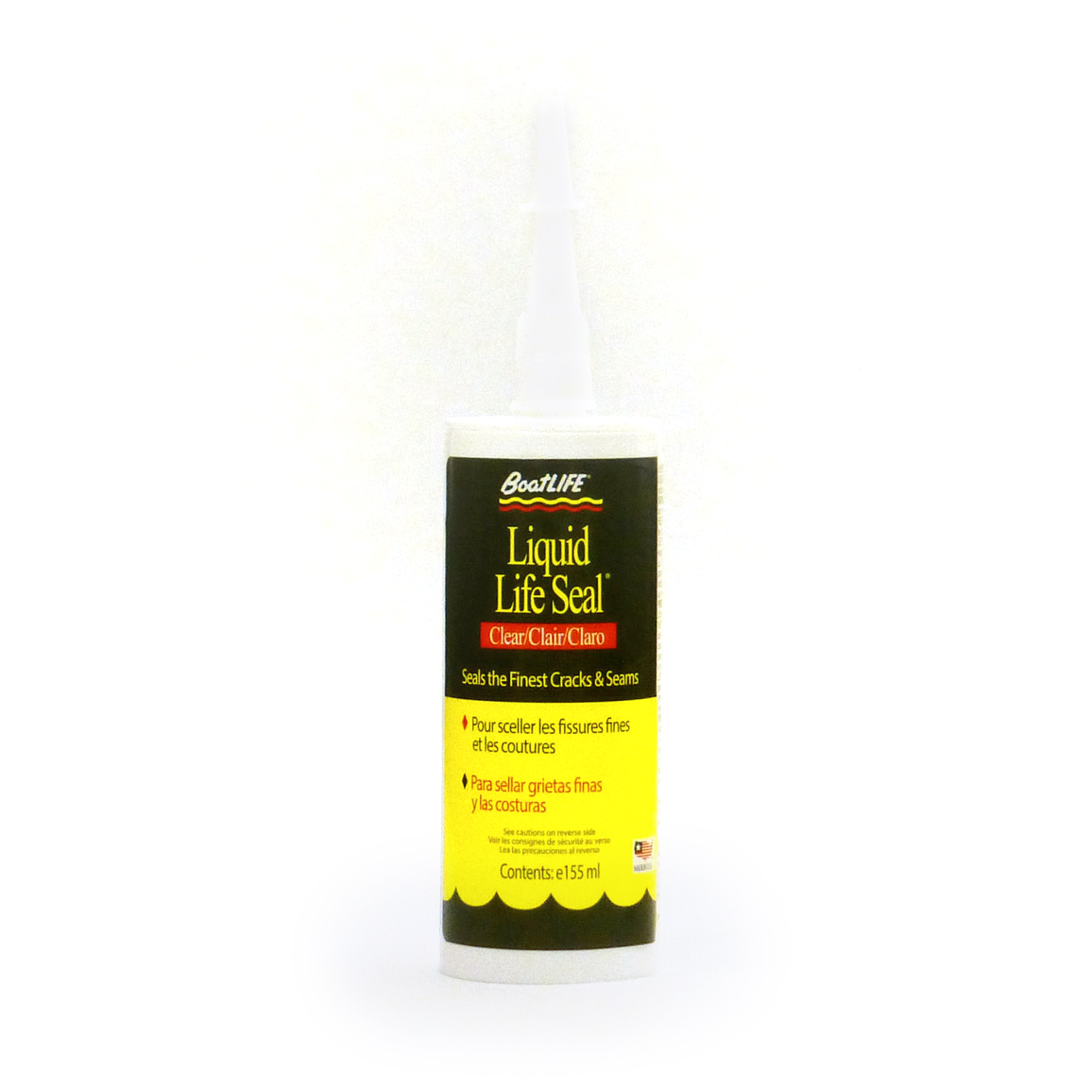
Liquid LifeSeal® Sealant 5.2 fl. oz. Clear

Stainless Steel Cleaner 16 fl. oz.
Related blogs, thanksgiving trivia.
Thanksgiving is one of America’s oldest and most loved holidays. Even though the story is steeped in a dark history […]
Detailing Your Boat
There’s nothing better than hitting the water in a beautiful boat. A warm summer day with the sun shining, there’s […]
How To Properly Clean Your Boat Trailer
We all know that cleaning your boat is important to not only keep it looking great, but to also ensure […]
All products proudly made in the usa

Boat maintenance log
by Simon Jollands | Boat Maintenance , Preparation , Yacht ownership

Keeping a boat maintenance log is an ideal way of reminding owners what needs to be done to a boat and when. Read on for some tips, advice and a sample maintenance log.
However keen you may be to work on your boat, organising yourself can be challenging on occasions. Planning routine boat maintenance in advance can really help you in the long term.
Getting organised
If you are thinking of doing the bulk of the work yourself then it is advisable to be realistic about how much work needs to be done and approximately how long it is going to take. The winter weather can often put a spanner in the works so you may need to build in some flexibility. For those fortunate enough to have friends or family who are happy to give you a hand, the sooner you can firm up dates in diaries for doing this work the better. Remember to give them plenty of advance warning, preferably when the sun is still shining.
Even if you are not going to do the routine maintenance work yourself due to the pressure of work, physical impediment, or because you can afford not to, then you still need to do some planning well ahead of time. This means speaking to your boatyard early on and explaining what tasks need to be done and when. It is a little foolhardy just to take the boat ashore at the end of the season and then three months later ask the yard to do all the maintenance just before you plan to go afloat in the spring. Not a good plan.
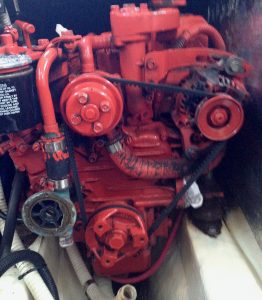
Doing the work yourself
Begin by checking through the boat’s maintenance history, noting when work was done in previous years, how much it cost and estimating how long each task took.
Make a list of the materials and tools you will need for each task coming up and remember to keep a note of what you spent on materials and where you bought them. With boating, it always pays to shop around to get the best price for parts.
While your local chandlery might be your favourite shop in the world to browse in, if you are after non-specialist products, such as sponges, brushes, paint rollers, thinners, solvents and tape, you will most likely find similar items in large hardware stores at a fraction of the price. Also, if you are really organised, then buy enough materials to last for a whole season and you will save yourself both time and money in the long run.
Maintenance log spreadsheets
There are some excellent downloadable boat maintenance log spreadsheets available and one in particular I would recommend is produced by Viki Moore of Astrolabe Sailing see www.astrolabesailing.com . Viki’s spreadsheet collates all kinds of information which is boating related including maintenance, boat details, spare parts, annual budget, personal inventory, passage log and more.
Viki’s boat maintenance worksheet is designed to work as a reminder of work to be done as well as a record of what has been done in the past. There are columns to add the parts required, their part number, measurements and other details to make life easier when you need to place orders and plan the work.
Below are some extracts taken from Viki’s maintenance log that gives an overview plan of the routine maintenance that needs to be carried out annually on a typical mid-size cruising yacht.
Should you decide not to keep a computer based maintenance log, it would still be a good idea to make a plan of what routine maintenance needs to be done through the year, noting the jobs that can be done only when the boat is hauled out. We hope the checklists above will help you get started.

[fts_facebook type=page id=820902544629856 access_token=EAAP9hArvboQBAMMusRb1XctIwYq9fUcSZCVNDQAMjkZCiqAIMiZBkawPJZB3VkeSsH6gCIDfIZAslzZBRAEXYdesg0fu11YIst1FXtABBwdULjOsYFGUYqNujLSxRIWxKAcqm7bb9dmAgzJDZCVhkRj6r9useCQqJr4wJnxkBv909ySYxqj7hYl posts=4 height=650px description=no posts_displayed=page_only]
Recent Posts
- Navigating narrow channels
- DIY boat upgrades: Budget-friendly projects to enhance your (older!) boat
- Boat Security: Protecting your vessel from theft & vandalism
- Learning about diesel engine maintenance
- 2023 Rolex Fastnet Race – Part 3
- 2024 BOAT BUYERS GUIDE
- Email Newsletters
- Boat of the Year
- 2024 Freshwater Boat and Gear Buyers Guide
- 2024 Boat Buyers Guide
- 2024 Water Sports Boat Buyers Guide
- 2023 Pontoon Boat Buyers Guide
- Cruising Boats
- Pontoon Boats
- Fishing Boats
- Personal Watercraft
- Water Sports
- Boat Walkthroughs
- What To Look For
- Best Marine Electronics & Technology
- Watersports Favorites Spring 2022
- Boating Lab
- Boating Safety

Reasons to Keep a Boat Maintenance Log
- By Rich Johnson
- Updated: August 10, 2021
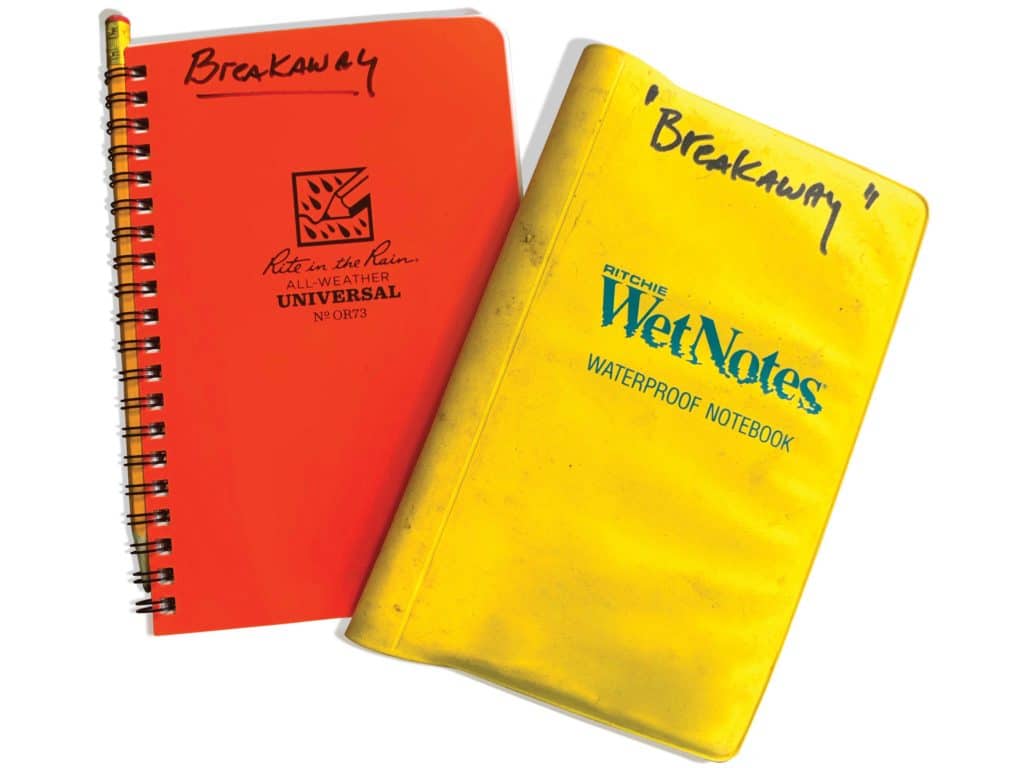
Death and taxes—the only things you can really count on, or so they say. Of course, if you own a boat, there will be the eventual sale of that boat, which is kind of like death.
Hey, cheer up. Maybe the sale of your boat is so you can buy a different one—bigger, faster, prettier and better equipped. Regardless, it is true that at some point all of us will face the prospect of selling a boat.
No matter how you feel about selling your boat, the process will go easier if you have kept a detailed maintenance log extending all the way back to when you bought it. The reason this will ease the process is because the prospective buyer will feel much happier and more confident about the condition of your boat if he or she can see that diligent attention has been paid to maintenance.
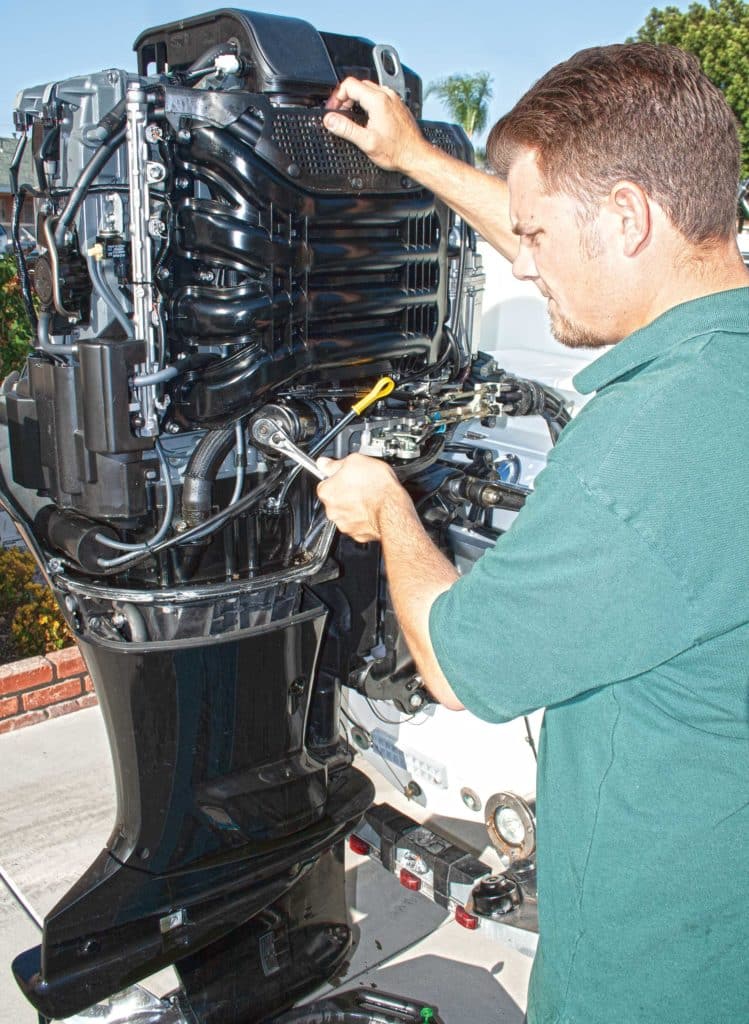
Along that same line, when you buy a used boat, you will want to be able to check over the maintenance log to make sure everything has been done to keep the vessel in satisfactory working order. So, a good maintenance log is a big deal, whether you’re selling or buying a boat.
As an owner, a maintenance log is a great aid in caring for your boat. Noting the dates of regularly scheduled maintenance items, such as filter changes, and oil and other fluid changes, makes it easier to care for your boat, its engines and its systems. Additionally, unscheduled maintenance, such as battery swaps, sacrificial-anode replacements, steering-cable replacement, topping off hydraulic fluid, etc., will help you and prove more valuable with time. That’s because the longer you keep a log, the more patterns of wear—based on your individual use—will begin to appear. So, you’ll know to replace the battery or cable before either leaves you stranded. Track your fuel purchases and engine hours too because fuel quantity burned versus hours is a good barometer of engine health.
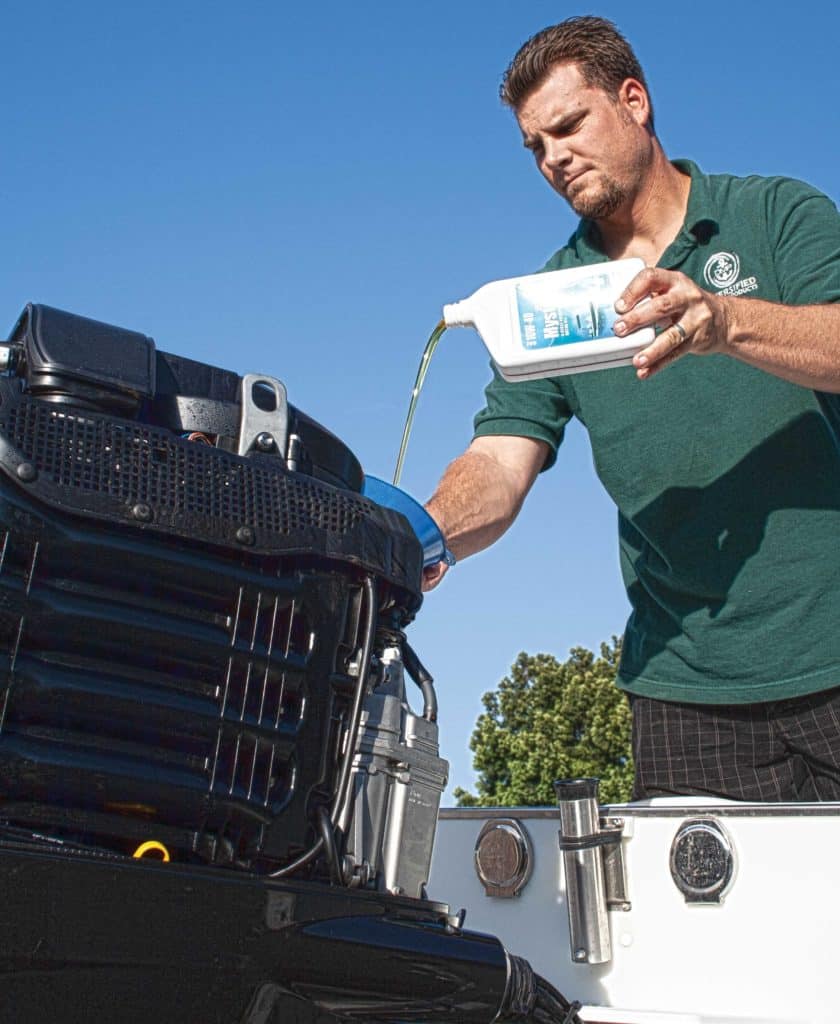
It’s also helpful to keep track of part numbers, like spark plugs, filters, O-rings, the ignition-key number, etc. Also note fuse and breaker types, and the amperage ratings for all your devices. Note the bulb type and amperage for all lights. Doing so makes it easy to buy replacements. Reserve two or three pages at the back of your notebook as a repository for this info. If your book has pockets on the covers, you can rip off the labels of parts boxes and keep them handy for reference.
But for now, let’s talk about you as a seller. Remember, a log is not only about maintenance. It should include the date when any new equipment was added. It’s a good idea to make note of the cost of parts and labor, which will help justify the price you ask for your fine vessel. And be sure to save all the owner’s manuals and receipts in a secure and well-organized place so you can pass them along to the new owner. In essence, any time you do anything to the boat, whether it be service-related, routine maintenance, parts replacement, or adding new goodies, write it down in the in the logbook. That log will be money in the bank when it comes time to sell. Here’s how to make a good one.
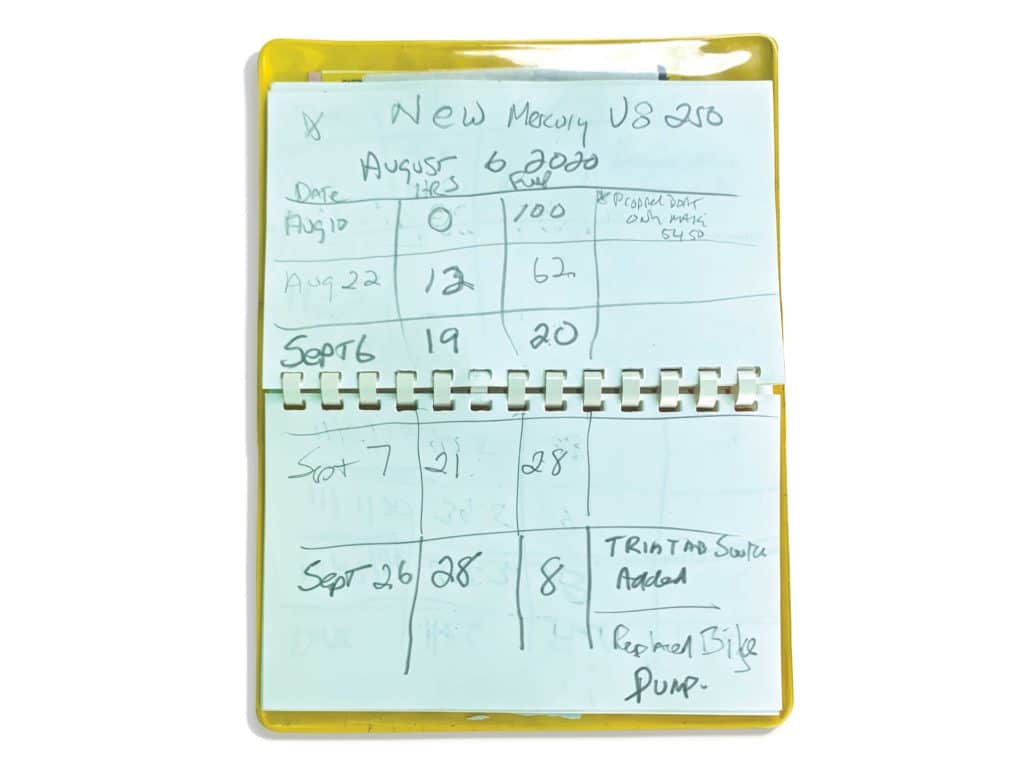
Jot These Things Down
Get Organized
A maintenance log, in my opinion, should be nothing more than lined pages on which you can make notes about everything that is done to the boat. If the log is already organized into categories for things such as engine- oil changes, filter changes, etc., it will be less inviting and more cumbersome to make notes about all the noncategorized things. There’s a ton of stuff to be written in a maintenance log, so don’t constrain yourself by having a logbook that boxes you into a limited number of categories.
Neatness Counts
Take the time to write clearly so future owners can easily read what has been written. Include part numbers and brand names. Note sources where you made purchases so future purchasers might be able to go to those same sources for parts and supplies. For some things, make note of not only the date but also the engine hours when the service was performed. If someone else did the repair or service, make note of who did it, their address and phone number.
Make a List
Make note of all boat work in your maintenance log, no matter how trivial it might seem to you, and include the date of the work and engine hours at that particular time. Your list will be extensive, but key service elements to document include new fluids, filters, belts, hoses, tanks, fuel lines, batteries, cables and pumps.
In addition, don’t forget to log the addition, replacement or service of equipment such as deck hardware, smoke and CO detectors, marine electronics, canvas, the marine sanitation system, lighting, throttle and shift cables, hydraulic systems, bottom paint and more.
Depending on your boat, there might be more categories on your list. But do yourself a favor and fill out the maintenance log as thoroughly as possible. This might seem tedious, but it’ll pay off in the end.
- More: boat maintenance , how to buy a boat , How-To , Preventative Care
More How To

I Learned About Boating From This: Capsize, Rescue and Lessons Learned

Should You Abandon Ship During a Boat Fire?

38 Top Make-Ready Tips for the Spring Boating Season

On Board With: Andrew Robbins

Boat Test: 2024 Regal 38 Surf
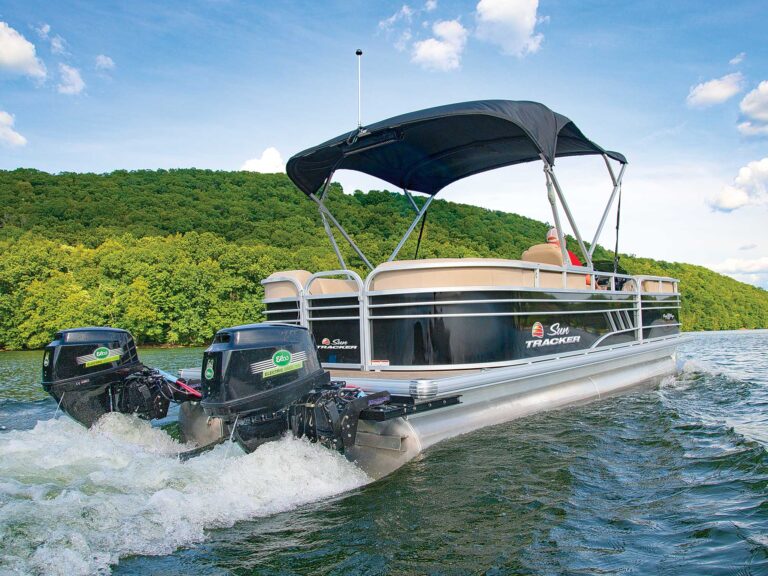
Using Hydrofoils to Improve Boat Performance
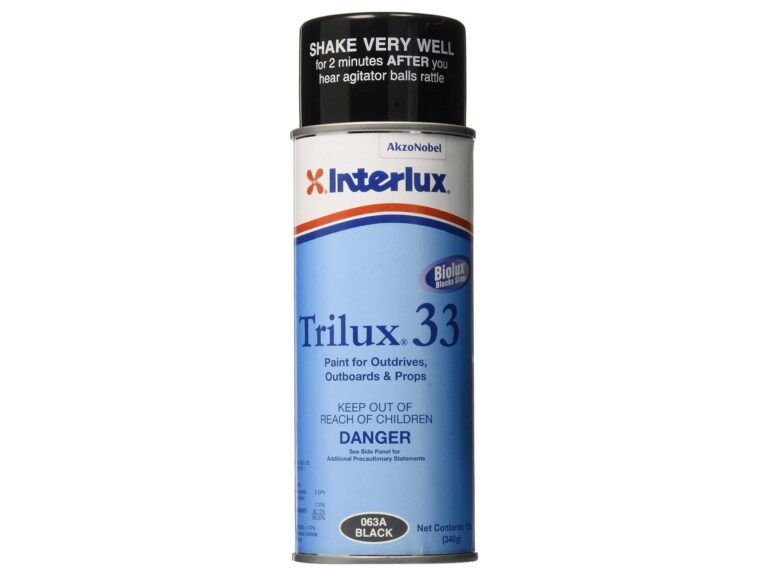
We Test Interlux Trilux 33 Aerosol Antifouling Paint

- Digital Edition
- Customer Service
- Privacy Policy
- Cruising World
- Sailing World
- Salt Water Sportsman
- Sport Fishing
- Wakeboarding
Many products featured on this site were editorially chosen. Boating may receive financial compensation for products purchased through this site.
Copyright © 2024 Boating Firecrown . All rights reserved. Reproduction in whole or in part without permission is prohibited.
- Skip to primary navigation
- Skip to main content
- Skip to primary sidebar
- Skip to footer
Sailing Eurybia
Two Humans and a Dog sail Mexico on a Sea Maid Ketch
How to Put Together an Effective Log Book
April 10, 2015 9 Comments
You are required to keep a Ship’s Log at sea, but there are lots of ideas about what exactly is required or useful in a log book. Finding a flexible, affordable, weather resistant solution is also not easy. We’ve found some solutions that you might find helpful.
The first boat we bought had a huge leather-bound log that they had religiously kept from the day she was launched forty years earlier. It had a screw-post binder which allowed it to grow over time by adding more pages. The one trouble with that log book was that experiential anecdotes were mixed in with maintenance notes and voyaging notes – it was very difficult to find specific references. The leather also had gotten damp over the years and looked a bit worse – more charismatic – for wear.
So for Phoenix we created two screw post log books, one for maintenance and experiential anecdotes with an index on each page, and a second Ship’s log for voyaging notes. Both are screw post books and both are filled with pages that can be printed on any printer.
Ship’s Log Book

Journal / Daily Log Book

The Daily Log is a sort of Journal where we write our thoughts, memories and keep notes on what we fixed. Our passengers are also welcome to write their impressions. In order to make it easier to find notes on what we fixed or broke, there is an index along the bottom of each page with the major systems (see above) such as Instruments, Plumbing, etc. By circling the system that is discussed on that page the log is much easier to visually search later. I also leave a large outside margin for adding dates, notes etc. Daily Log – Sheets
Maintenance Log Book

The format and included fields will be different for each boat depending on its systems. And example of ours can be seen below. You can also download it and customize it for yourself. You will also need to update it when you add or replace a system. Checklist
Resources to Make Your Own Log Book
Log book pages.
Download, customize, and print these templates to make your own log books (all in Word, doc format):
Ship’s Log – Sheets | Ship’s Log – TOC | Daily Log – Sheets | Maintenance Checklist

Finding the right material for the cover of a screw post portfolio cover was a little challenging. First I tried a conventional hardback cardboard binding, but this warped in just a season or two. So I have two suggestions – the rigid Acrylic Screwpost Portfolio Cover (Vista) which is less expensive and the Aluminum Screwpost Portfolio Cover (Machina) which is very classy, indestructible, but more expensive and may scratch wood surfaces.
Get Logging
Whether you decide to use some of the resources here, or buy a log book from a chandlery, the important thing is to actually use these logs. The Ship’s Log is a bare minimum requirement for responsible seamanship. The Daily Log is wonderful to look back on and is a great memory jog for writing those facebook or blog posts when you return to the world of internet.
Share this:
- Click to share on Twitter (Opens in new window)
- Click to share on Facebook (Opens in new window)
- Click to share on WhatsApp (Opens in new window)
This site uses Akismet to reduce spam. Learn how your comment data is processed .
I NEED A FORM FOR ANCHOR LOG BOOK
I’ve never heard of an anchoring log book – what purpose is it for? What data do you want to record?
Hi Marie, I just came across your website. It is very nice and lost of great info. I did not ask the original question regarding an anchor log however, I have heard from others that it is a good practice to record some basic info about it like depth of water, method of anchoring (e.g., 1 or 2, Mediterranean Mooring, etc.). I think the idea is then this info can be used for things like planning future trips, maintenance, etc. I hope this helps.
Thanks for the useful logbook pages. It took me a little while to figure out that “init” meant the initials of the person filling in the entry. I still haven’t figured out the meaning of the “Crs” column. What’s it for?
CRS is the course! Sorry – I should have deciphered those!
That makes perfect sense – course. I’m tweaking this by adding a temperature column under conditions. I’m also changing the speed / miles to a dual data set. GPS Speed and GPS Mile and Course Speed and Course Miles. My thought is that tacking back and forth you are building up miles but might not be making many miles along your course. If the GPS / plotting software is running you are likely getting two sets of numbers that might be of interest to record. If you aren’t really going anywhere you might just want to log the distance traveled … Read more »
Great Info! One question…with your logs the pages appear to be 8.5×11 inch sheets, but the binders you point to are 11×17. What do you actually use? It appears the exact binders you linked to are discontinued…
I use 8.5×11, they may have changed their links. I’ll see if I can find the same product and fix the links. Thanks!
Ahoy! Magnificent site you have here. I am reading The Log of the Cutty Sark, and dont understand this: After giving the fix position lat/long – the course always follows, given by three elements f.i. «S. 42˚ W.» I assume S.
Stay in touch - sign up for our newsletter for occasional news from Eurybia and her crew.
Your Boat Name:
Email address:
- Privacy Policy
“Live in the sunshine, Swim the sea, Drink the wild air” --Emerson

About This Site
SailingEurybia is a WordPress site. The theme is a version of the Genesis Sample Theme developed by Eurybia-Marie . ©2018

- About the Boat
- About the Location
Spreadsheets

- Captains log to keep track of sea time towards the captain’s license.
- Maintenance log of work completed.
- Recurring maintenance schedule.
- Templates of the electronic logs to be printed out. I keep these hard copies as an easier way to write notes as I work. I then copy the notes to the electronic log when I have time (and after I’ve cleaned all the oil, sweat and blood off of my body).
- A provisions log. Useful when it’s important to track consumption on a long crossing.
- Edible provisions.
- Inedible provisions.
- Medical provisions.
- Non-expendables.
- Personal gear (recommended for each crew member to bring).
- And of course, Quicken for tracking financial expenditures.
9 Responses to Spreadsheets
looking for a provisioning list program in xls format
Does the .xlsx version on this page not work for you? I’m pretty busy this week, but I should be able to get the .xls version up next week. Sorry for the delay.
You use the term “HOBBS” as a header for some columns in your sheets. I believe that I am understanding meaning of HOBBS to be something different from how you use it here. Can you clarify?
I mean to say, “Engine hours meter.”
I just googled the term “hobbs,” and evidently it’s only used in aviation. Oops.
What does the NC column stand for?
Near Coastal: I was logging days outside the demarcation line towards a USCG Near Coastal Endorsement.
Many thanks
Pingback: Trustbet
Pingback: ติดเน็ต ais
Leave a Reply Cancel reply
Your email address will not be published. Required fields are marked *
Save my name, email, and website in this browser for the next time I comment.
- Search for:
- Blog Posts (111)
- Racing (10)
- Trip Updates (12)
- Cruisers & Sailing Forum
- Sailing Magazine on the Cal 39
- sailboatdata.com
- Noonsite.com
- Play the Rules
- Cal 39 Owners
- Sail Trim Video

Service Locator
- Angler Endorsement
- Boat Towing Coverage
- Mechanical Breakdown
- Insurance Requirements in Mexico
- Agreed Hull Value
- Actual Cash Value
- Liability Only
- Insurance Payment Options
- Claims Information
- Towing Service Agreement
- Membership Plans
- Boat Show Tickets
- BoatUS Boats For Sale
- Membership Payment Options
- Consumer Affairs
- Boat Documentation Requirements
- Installation Instructions
- Shipping & Handling Information
- Contact Boat Lettering
- End User Agreement
- Frequently Asked Questions
- Vessel Documentation
- BoatUS Foundation
- Government Affairs
- Powercruisers
- Buying & Selling Advice
- Maintenance
- Tow Vehicles
- Make & Create
- Makeovers & Refitting
- Accessories
- Electronics
- Skills, Tips, Tools
- Spring Preparation
- Winterization
- Boaters’ Rights
- Environment & Clean Water
- Boat Safety
- Navigational Hazards
- Personal Safety
- Batteries & Onboard Power
- Motors, Engines, Propulsion
- Best Day on the Water
- Books & Movies
- Communication & Etiquette
- Contests & Sweepstakes
- Colleges & Tech Schools
- Food, Drink, Entertainment
- New To Boating
- Travel & Destinations
- Watersports
- Anchors & Anchoring
- Boat Handling
- ← How-To DIY
Boat And Trailer Maintenance Checklist
Advertisement
Take care of the boat, trailer, and engine and the chances of a problem occurring on the water or the road will be minimized. Here's what you need to know.
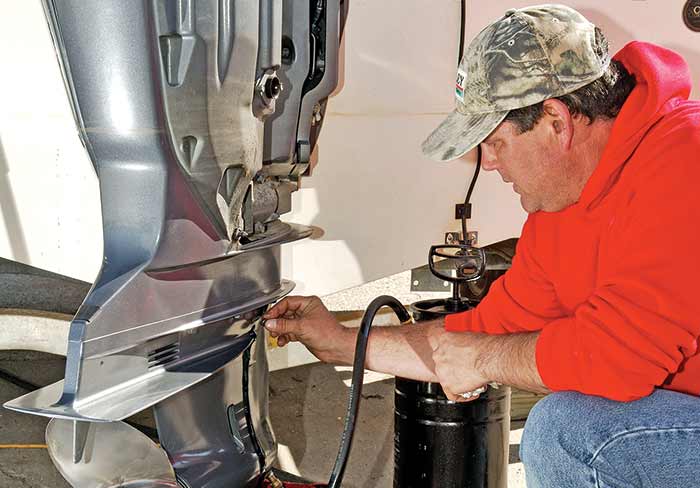
Whether you do it yourself or leave it to the pros, routine maintenance is essential to keep your rig in tip-top shape.
So you're a new boat owner. Your pristine center-console sits proudly in your driveway, the outboard shining brightly in the sun, and even the trailer is sleek and polished. How can you keep it at least close to looking and performing as it does now? Maintenance is the key.
But if you're not mechanically inclined, how can you properly care for your new rig? If you're all thumbs, budget in some bucks for dealer maintenance. In this case, it's probably best for both you and your boat if you leave the mechanical details to the pros. You can, however, perform all the tasks that don't require technical expertise. Such tasks as keeping fittings and moving parts lubricated, cleaning and waxing the finish, checking the drive lubricant and engine oil, making sure that fishing line isn't wrapped around the prop shaft — these are all examples of simple skills a responsible boater should learn, especially to protect his or her investment. While boats have never been cheap, they seem to be more expensive than ever when compared to the average paycheck, so it's smart ownership to make sure that all is up to snuff.
To help you out, we've created a simple Timeline and Maintenance Chart, one that works for DIYers and tech-savvy boaters alike. Refer to the chart to check maintenance items before every outing and at every 20, 50, and 100 hours of use. Seasonal boaters should consult the chart before every layup. With our chart as your guide, your rig will stay like new for longer and command top price at resale or trade-in time, particularly if you keep records of what you've done and when. The chart is the suggested schedule, although some boats may require more frequent checks. If in doubt always follow the manufacturer's recommendations for your particular boat, engine, and trailer.
Click on checkmarks in the chart below to watch our how-to videos.
Download a copy of the checklist above.
Related Articles
The truth about ceramic coatings for boats.
Our editor investigates the marketing claims of consumer-grade ceramic coatings.
Fine-Tune Your Side Scan Fishfinder
Take your side-scanning fishfinder off auto mode, and you’ll be spotting your prey from afar in no time
DIY Boat Foam Decking
Closed-cell foam flooring helps make boating more comfortable. Here’s how to install it on your vessel
Click to explore related articles
Contributor, BoatUS Magazine
John Tiger is a freelance boating writer and frequent contributor to many magazines.
BoatUS Magazine Is A Benefit Of BoatUS Membership
Membership Benefits Include:
Subscription to the print version of BoatUS Magazine
4% back on purchases from West Marine stores or online at WestMarine.com
Discounts on fuel, transient slips, repairs and more at over 1,200 businesses
Deals on cruises, charters, car rentals, hotel stays and more…
All for only $25/year!
We use cookies to enhance your visit to our website and to improve your experience. By continuing to use our website, you’re agreeing to our cookie policy.

- Forums New posts Unanswered threads Register Top Posts Email
- What's new New posts New Posts (legacy) Latest activity New media
- Media New media New comments
- Boat Info Downloads Weekly Quiz Topic FAQ 10000boatnames.com
- Classifieds Sell Your Boat Used Gear for Sale
- Parts General Marine Parts Hunter Beneteau Catalina MacGregor Oday
- Help Terms of Use Monday Mail Subscribe Monday Mail Unsubscribe
Ship/Maintenance log book
- Thread starter Rjm st.petersburg
- Start date Apr 17, 2022
- Forums for All Owners
- Ask All Sailors
Rjm st.petersburg
I'm curious as to how people log their time, weather, distance, crew, maintenance, repairs, hours, spare parts... I'm looking to get a new and more organized way of logging information than a spreadsheet. Thank you
I have a log book for maintenance that I update as repairs and regular maintenance are completed. The Admiral keeps the cruise log book with times, places, distances and weather. I bought them 17 years ago when I bought the boat. They are available in most marine supply houses.
As someone who has had to keep a LOT of logs in my professional and personal lives, I recommend looking at various options online. Any logbook being sold should have a sample page for you to look at. Use these sample pages as a prompt to determine what info you want to record, and what you don't. Then craft your own "perfect" page in a word processing program, and take it to a print shop on a thumb drive. Have them print as many as you want in a book and bind them for you. Look at mariner's logs, pilot (aircraft) logs, scuba logs, trucker's logs, taxi logs, dispatch logs of all types, etc. You'll soon get an idea of what works for you and what does not. Having a form ensures you won't leave anything out accidentally, but having YOUR form means you are not paying for a page that asks about stuff you don't care about, like your last pump-out if you have a composting toilet. This seems like a small thing, but every blank that you never make an entry in has taken away a small bit of space on that page that could have been used for that catchall "Comments" section, for cool stuff you saw or did. This approach also lets you determine the size of the page, and therefore the size of the logbook, which is perfect if you have a special nook where the log is stored. You will likely save money over the long haul too, and the printer should be able to emboss your name and/or the boat's name on the cover of the log, which feels kind of luxurious, IMO.

I've tried a few ways over the years but found I prefer my customizing my own. We have a separate log for our cruising destinations and comments from one that is for maintenance and repairs. I stopped logging fuel consumption and fill dates as I've found I do really nothing with those notations. If I sell the boat then I can pass the maintenance log to the new owner and keep our diary of cruise destinations, dates, and comments.
Davidasailor26
- Times at boat
- Hours at boat
- Hours on water
- Engine hours
- Engine chronometer
- Maintenance / supplies
- Crew / guests
I have a written log on the boat that includes trips and maintenance/upgrade items also. I also keep a spreadsheet that mirrors the written one for maintenance and upgrades; no trips. Just don't total the spreadsheet or you may pass out.
I use a spreadsheet. I guess you could set up a relational database, or use a book. Spreadsheet works just fine for me.
Hand written log book kept on the boat at the chart table. I also use hand written notebook pages for where things are stored. I find it so much faster, easier and all crew members can look at them at any time. dj
Rick D said: Just don't total the spreadsheet or you may pass out. Click to expand
Sailfanatic
I have used a spreadsheet with separate workbooks for the different subjects to be tracked or logged which are: 1. Engine service log 2. Upgrade & repair log 3. Items to buy 4. Winterizing work list 5. Launching work list 6. Engine parts list and spare I keep a hardcopy of these pages in the chart table. As items, issues and ideas come up and things get done during the year, I write them in on the hardcopy. Each Spring, I update the electronic copy with changes, reset the prior year's Winterizing work list for this new year and print a new hardcopy. Each Fall, I update the electronic copy with changes, reset the Launching work list for next year and print a new hardcopy. Works well for me.
Attachments

The spreadsheet seems to be the best way for me. I will get my son to set them up, then I can update and itemize things to death. Thank you Sailfanatic for your spread sheet, it gives me a starting point.
Rjm st.petersburg said: The spreadsheet seems to be the best way for me. I will get my son to set them up, then I can update and itemize things to death. Thank you Sailfanatic for your spread sheet, it gives me a starting point. Click to expand
Boat Maintenance Log Book.xlsx
I keep a handwritten log of maintenance on the engine so I know when I last changed filters, inspected impellar, etc. and nothing else. I am good for 200 hours on an oil change. If I am cruising, I just rely on my memory of trips made under power to determine engine needs. I do not keep a log of trips in most situations. A long cruise on Lake Ontario would be 400 miles and that is not even 80 hours on the engine if I motored the entire way. Seems to work for me. My 1985 boat uses no oil.
I use Microsoft OneNote for maintenance as well as To Do list and I made a Kanban board for all of the planned work. I also have winterizing and spring commissioning checklists, equipment information and lists in the boat OneNote book. I can access it from my phone, tablet or computer, all searchable and readily available from anywhere.
Cleaning my office, I came across the attached checklist. It is for winter in the Pacific NW, so may want to download it and save it for next November. Your Call.
- PNW Winter CheckList.pdf 1.2 MB Views: 82
I’ve just been using Notes in my iPhone so it’s always handy. I keep three maintenance related lists: 1) A running To Do List for spring commissioning, winterization, winter projects, launch critical/non-critical spring projects and as few summer projects as possible. Items get checked off as completed. The list gets saved and re-used annually with routine maintenance items remaining and projects added or removed. 2) Maintenance Log, organized by year and month, of completed routine maintenance, repairs, refits, upgrades, and running notes to track issues. 3) Boat Specs List which is everything from Hull# & boat data to oil type and model numbers for fuel, oil & air filters, joker valve, line sizes & lengths, etc.
Similar to @DArcy but I use Evernote. I keep notes for boat work visits, boat sailing logs, manuals and many other categories.
- This site uses cookies to help personalise content, tailor your experience and to keep you logged in if you register. By continuing to use this site, you are consenting to our use of cookies. Accept Learn more…

Please verify you are a human
Access to this page has been denied because we believe you are using automation tools to browse the website.
This may happen as a result of the following:
- Javascript is disabled or blocked by an extension (ad blockers for example)
- Your browser does not support cookies
Please make sure that Javascript and cookies are enabled on your browser and that you are not blocking them from loading.
Reference ID: 5e593ebe-e73e-11ee-a34d-1bb1e4ceb583
Powered by PerimeterX , Inc.
Dirona Around the World
Maintenance log.
On our previous boat , we were (just barely) able to remember when all mechanical systems needed service as the hours mounted and time passed. But that system broke down when we got the current boat. There are far more systems, many of the intervals vary greatly, and when running offshore, up-to-date service is even more important. We knew we needed some form of automation to help track all the systems and their varying maintenance schedules.
Many approaches to maintenance logs exist and, in fact, entire businesses have been built on tracking service items and notifying when service is needed. We are fairly hands-on and, for long-range cruisers, even though it takes time to understand all the systems, this feels like time well spent. One thousand miles from shore, there won’t be someone else flying in to help. A good approach for maintenance and service tracking is to use a database, and drive all tracking and notification from a software application built upon the database. We still may take this route someday in the future, but didn’t feel like taking the time to write this complete application up front. Instead we elected to use an Excel-based spread sheet model. Just as many exotic financial instruments are first implemented in spreadsheets and only migrate to full applications when they are successful and need to scale, we went first to Excel. It’s actually working out remarkably well.
The log contains one entry per service item, where each item has an associated number of hours and/or number of months between service intervals. For example, in the screenshot below, the cells highlighted in blue indicate the main engine oil and filter are due to be changed every 6 months or 375 hours. This information is entered per service item, one time only. Service intervals can be expressed in only hours or only months. In the screen shot below, the start batteries need to be tested every 12 months, but have no hour-based service interval, and the harmonic balancer should be changed every 8,000 hours, but has time-based service interval.
The top of the sheet lists the current number of hours for each piece of equipment. For example, the number of main engine hours, 5,208, are highlighted in yellow below. When we update the number of hours on a piece of equipment, the log tells us when the next service is due in 1) hours for each item that depends on that piece of equipment and/or 2) months based on the current date. In this case, the cells highlighted in green indicate that the main engine oil and filter are due to be changed in 4 months or 93 hours.
As service work is performed, we enter the date and/or number of hours on the associated equipment when the work was done. In the screen shot below, the main engine oil and filter were last changed on 2015/01/09 at 4,926 engine hours. This data, combined with the current date and the main engine hours at the top of the spreadsheet, are used to calculate the months and/or hours left before the next service is required.
The most useful aspect of the spreadsheet is the highlighting of a service item near due or overdue. In the screenshot below, we’ve incremented the number of main engine hours by 200 to 5,408. The main engine oil and filter change is now overdue by 107 hours, and that service item now shows in red. In addition, the service item to clean the air filter is orange. This indicates that the service item is near due, but is not yet overdue. The orange coloring uses the warning thresholds that we’ve highlighted in blue below. In this case, we want to display a service item in orange if it is within 1 month or 50 hours of being due.
Service items are grouped based on the equipment they depend on, if any, and the warning threshold. For the wing engine below, we have a warning threshold of 1 month and 15 hours. We could also choose, for example, to add another main engine group with a different warning threshold, such as 25 hours.
When a service item is near due or overdue, the normal way to change the text color back to black is to perform the service and update the date and/or associated equipment hours when the work was done. But sometimes this either isn’t feasible or necessary. That is where the Acknowledge column comes in. The screenshot below shows that the stabilizer fin zincs are 37 hours overdue for a change, but that’s best done in the yard. So we’ve entered “ACK:Yard” there and that changes the color from red to green. This still highlights the item as not done, but showing it in green will keep it visually separate from items that we really do want to handle as they become due. The “ACK:” portion of the text is all that is necessary for the acknowledgement, anything after that is for descriptive purposes only.
Extending a due date is different from an acknowledgement. The bottom cleaning currently is due after 3 months, but on inspection it’s still pretty good, so we’ve entered “M:1” below to extend the due interval by 1 month. In Seattle we used to change our zincs every 6 months. But since we’re not in marinas as frequently, we’re able to go longer as we’re no longer supporting other boats in the marina. So we instead check the zincs periodically and extend the due interval if they are in good shape. Below we’ve extended the due interval for the zinc change by 12 months using “M:12”, and it shows as 11 months overdue. The 12-month extension makes the zinc change due in April of 2015, 1 month from now. Since that is within the 1-month warning threshold for that service item group, the zinc change shows in orange. We’ll check the zincs soon and either change them or extend the due interval again.
In a similar vein, we also created an expiration schedule spreadsheet for non-maintenance items that we need to track, such as renewing our passports or drivers licenses. These are grouped based on the amount of lead-time needed to process each item.
The text color changes are implemented using conditional formatting. We have added extra columns, normally hidden, that extract some of the data from the service items plus their warning threshold and base hours. This puts the relevant data for a service item on a single row and simplifies the conditional formatting formulas.
The full spreadsheets are at:
http://mvdirona.com/blog/content/binary/DironaMaintenanceSchedule.xlsx
- http://mvdirona.com/blog/content/binary/DironaExpirationSchedule.xlsx .
Update 11/23/2018 : For those who have additional pieces of machinery to track, such as a second generator, we’ve posted our most current version of the spreadsheet that has been updated to include four “other machinery” entries at Updating the Maintenance Log .
If your comment doesn't show up right away, send us email and we'll dredge it out of the spam filter.
37 comments on “ Maintenance log ”
i wwould like to try to se it
It’s posted here: http://mvdirona.com/blog/content/binary/DironaMaintenanceSchedule.xlsx
James, Jennifer,
This is great, I just adapted it for our GB42 and it will be super handy to keep on top of the many systems that are hidden our of sight.
That’s great. We’re glad it looks like it’ll work for your Grand Banks.
Hi – I just came across this – It looks wonderful – I’m a very detailed oriented person and this looks like it fits that bill. I can’t however see a link to download this Excel Marvel – could you send me one please?
The full spreadsheets is at:
Thank You for sharing
Is there a reason for some of the cells having their own special conditional formatting – cell b22, b105, b100? Here are all of the conditional formatting cells. I am sure I will figure it out, and will maybe just stick with the last two conditional formula. I realize this is not turn-key and you have to understand Excel really well. I really like the fact that it is Excel and not a fancy application that could go away someday!
Main =IF(ISBLANK(J22) = FALSE, 1, 0) b22 – drain water off fuel filter $B$22 Main =IF(OR(IF(ISNUMBER(C22),((NOW()-F22)/30>C22),FALSE), IF(ISNUMBER(D22),((O22-G22)>D22),FALSE)),1,0) $B$22 Main =IF(OR(IF(ISNUMBER(C22),((NOW()-F22)/30>C22-M22),FALSE), IF(ISNUMBER(D22),((O22-G22)>D22-N22),FALSE)),1,0) $B$22 Main =IF(ISBLANK(J105) = FALSE, 1, 0) b105 – lubricate bicycle chain $B$105 Main =IF(OR(IF(ISNUMBER(C105),((NOW()-F105)/30>C105),FALSE), IF(ISNUMBER(D105),((O105-G105)>D105),FALSE)),1,0) $B$105 Main =IF(OR(IF(ISNUMBER(C105),((NOW()-F105)/30>C105-M105),FALSE), IF(ISNUMBER(D105),((O105-G105)>D105-N105),FALSE)),1,0) $B$105 Main =IF(ISBLANK(J100) = FALSE, 1, 0) b100-104 top off $B$100:$B$104 Main =IF(OR(IF(ISNUMBER(C100),((NOW()-F100)/30>C100),FALSE), IF(ISNUMBER(D100),((O100-G100)>D100),FALSE)),1,0) $B$100:$B$104 Main =IF(OR(IF(ISNUMBER(C100),((NOW()-F100)/30>C100-M100),FALSE), IF(ISNUMBER(D100),((O100-G100)>D100-N100),FALSE)),1,0) $B$100:$B$104 Main =R10 $B$57:$B$58,$B$71:$B$79,$B$48:$B$53,$B$83:$B$99,$B$37:$B$44,$B$10:$B$22,$B$26:$B$33,$B$62:$B$67 Main =IF(OR(IF(ISNUMBER(C10),((NOW()-F10)/30>C10+P10),FALSE), IF(ISNUMBER(D10),((O10-G10)>D10+Q10),FALSE)),1,0) $B$57:$B$58,$B$71:$B$79,$B$48:$B$53,$B$83:$B$99,$B$37:$B$44,$B$10:$B$22,$B$26:$B$33,$B$62:$B$67 Main =IF(OR(IF(ISNUMBER(C10),((NOW()-F10)/30>C10-M10+P10),FALSE), IF(ISNUMBER(D10),((O10-G10)>D10-N10+Q10),FALSE)),1,0) $B$57:$B$58,$B$71:$B$79,$B$48:$B$53,$B$83:$B$99,$B$37:$B$44,$B$10:$B$22,$B$26:$B$33,$B$62:$B$67
I didn’t check the expiration schedule spreadsheet—I’d forgotten there were two.
I’ll fix both spreadsheets tomorrow so that they’re both absolutely error-free.
On your question about =R10, that is referring to the value in hidden column R. R10 will be 1 if the J10 in the Acknowledge column has a value starting with “ACK:” in it, and that will show the item in green. When a service item is near due or overdue, the normal way to change the text color back to black is to perform the service and update the date and/or associated equipment hours when the work was done. But sometimes this either isn’t feasible or necessary. That is where the Acknowledge column comes in. Entering “ACK:xxx”, where xxx can be any text, changes the color from red to green. This still highlights the item as not done, but showing it in green will keep it visually separate from items that we really do want to handle as they become due. The “ACK:” portion of the text is all that is necessary for the acknowledgement, anything after that is for descriptive purposes only.
I am not sure if my comment got in or not – regarding the maintenance spreadsheet has one conditional formula that I am not sure what the function is:
=R10 ( on the range: $B$57:$B$58,$B$71:$B$79,$B$48:$B$53,$B$83:$B$99,$B$37:$B$44,$B$10:$B$22,$B$26:$B$33,$B$62:$B$67)
I will try to figure it out, but the sample expiration spreadsheet has REF# in some of the formulas ( which means the formula references cells that no longer exist). I am trying to figure out what the conditional formatting REF# cells should be referring to.
Sorry you’re having trouble with the spreadsheet. I don’t see any fields display REF#–is it possible you’ve edited/cleared something? Note that there are some hidden columns M-R that the other formulas reference–you might have accidentally deleted them.
If that isn’t the problem, could you tell me the row/column of one of the cells where you see REF# and the formula in that cell?
First thank-you so much for responding. The spreadsheet is amazing!! I have been able to dive deep into the logic and how the spreadsheet works to have it all work perfectly for me! Now I am moving onto the maintenance schedule!
The REF# references were in the Conditional Formatting for the worksheet. I was able to delete the rules that have “REF#” in them ( the REF means they were were referring to fields that do not exist). This was a problem with the base .xlsx before I made any changes at all.
Thank-you for sharing your work!! We just bought a new-to-us boat. I hope to be really good about keeping track of all maintenance and upgrades. This really paid off well for the motorcycle I just sold, although simpler records :)
The posted spreadsheet has no #REF errors in the Conditional Formatting. It’s easy to change something and create one though. The best way to make changes to the spreadsheet is one at a time, looking for any problems as you go, and undo the change if you get an error.
Glad you got it working, and hope you enjoy your new boat.
You can see the #REF in the conditional formula – here are all of the conditional formulas. Look at line 6. I hope this helps, but I am all set with the spreadsheet with making changes. It is great!!! Thank-you.
Sheet Formula Range ExpirationDates =IF(ISBLANK(F8) = FALSE, 1, 0) $B$8 ExpirationDates =NOW()>C8 $B$8 ExpirationDates =IF(ISBLANK(F6) = FALSE, 1, 0) $B$14,$B$6:$B$10,$B$18:$B$20 ExpirationDates =(C6-NOW())/30 <= 0 $B$14,$B$6:$B$10,$B$18:$B$20 ExpirationDates =(C6-NOW())/30#REF!),FALSE), IF(ISNUMBER(#REF!),((#REF!-D14)>#REF!),FALSE)),1,0) $B$14,$B$18 ExpirationDates =IF(OR(IF(ISNUMBER(#REF!),((NOW()-C14)/30>#REF!-L14),FALSE), IF(ISNUMBER(#REF!),((#REF!-D14)>#REF!-M14),FALSE)),1,0) $B$14,$B$18
I should have added that the formulas are what came directly with the sheet provided in your link. This is without me making any changes at all. But again, I am all set, and love what I have working with my expiration sheet – all works great!
Hello James, Nice spreadsheet and thank you for sharing. I just bought a sailboat with a diesel engine. You say that “…When we update the number of hours on a piece of equipment, the log tells us when the next service is due in 1) hours for each item that depends on that piece of equipment and/or 2) months based on the current date. In this case, the cells highlighted in green indicate that the main engine oil and filter are due to be changed in 4 months or 93 hours…”
I am looking for how updating C1 cell automatically updates H14, but I do not see C1 referenced in the H15 formula. Is C1 value used just for manual tracking?
Also, what is the 4.34 multiplier referencing or correcting for?
Thank you!!
Glad you find the spreadsheet helpful.
The hours at the top (C1 etc) are used for the calculation of “Hours left” in column I (based on the values in hidden column O).
The calculation for “Weeks left” in column H only depends on the last service data and the “Months due” value in column C, so won’t use hours from C1 etc. The 4.34 multiplier is to convert from months to weeks.
Excellent, thank you!
SO nice of you two to share this! I was going to sit down and build something like this from scratch, but you just saved me hours. : )
Good to hear. I hope it works well for you.
My version of your spreadsheet (modified for my vessel) seems to have lost its ability to color code items based on date timing (yellow, red, etc.). I cannot find the location for the conditional formulas that control the text colors. Could you please clarify where I can find the formulas?
The color coding is based on the values of hidden columns M-R. See the bottom of this blog post for an explanation with a screenshot.
just found your maint log schedule. tried to import it onto my iMac and a number of formula wouldn’t transfer , any suggestions ? Regards Paul
It sounds like some incompatibility between the Excel or whatever you are using on your iMac. When you say “import” it sounds like you might not be using Microsoft Excel. If you aren’t, that or Office365 should open the spreadsheet without problem. If you are using Microsoft Excel might try latest patches or installing the new version. If that isn’t practical, Google docs will probably read the spreadsheet: https://www.google.com/sheets/about/ .
James, just found this blog and your maintenance spreadsheet. I’ve been looking for a good tool for tracking maintenance on our 34′ PDQ power catamaran. Question… could you please clarify to purpose of the “Base Hours” column?
Hi Mac. Glad to hear the spread sheet might be useful to you. The “base hours” column is explained in the blog: “We have added extra columns, normally hidden, that extract some of the data from the service items plus their warning threshold and base hours. This puts the relevant data for a service item on a single row and simplifies the conditional formatting formulas.” ( https://mvdirona.com/2015/03/maintenance-log/ ).
We’re just picking up the current engine hours from the top left hand corner of the spread sheet and repeating it as a hidden column. This just makes it easier to code the rest of the spread sheet and can be and should be ignored. If you just copy full rows or delete full rows, everything will work fine. Base hours is essentially just a programming convenience to make the spread sheet simpler to write.
James, thanks for your reply. Another question… what do you do for a maintenance “log”? (a chronological history)
The maintenance log probably should have been done using a database application but the excel version is easy to use and serves to remind me to do what needs to be done. We have a separate boats log where I keep all boats movements, consumption, uses, anomalies, events, and maintenance. The excel spreadsheet reminds to get the work done and the ships log is where the record is kept.
Thanks for providing your maintenance log. We are the new owners of a Kadey Krogen Whaleback and are slowly getting our heads wrapped around all the systems. Your log will be a great help in keeping things maintained properly. Do you have an example of your Ships Log that you’d be willing to share? I did search the blog and couldn’t turn it up.
BTW, I really enjoy your blog. Very inspiring to us as we start to plan our travels.
Our ships log isn’t very automated. We just use a word document with a computer generated trip summary that we just copy into the log. More detail on it here: https://mvdirona.com/2020/08/ships-log/ .
Hi James Thks for your entry – valuable and highly useful. I am presently considering a secondhand 47′ and would be interested in stalling the Matron equipment here. Have received the ‘N2K Builder_UM_1 116’ and wonder if you are willing to post your DIRONA details here as well. It would give me a good comparison and be of great help in evaluating details and cost. Was your installation done from the PAE factory or did you do it yourself?? Your are welcome to reply by mail directly. Thks for your entries -interesting and great for a NordhavnDreamer. Best regards Erik/Denmark
Hi Erik. Sure, I’m happy to post more data on the Maretron system but I don’t have a current n2kbuilder example. What we could post is the n2kanalyzer output showing all the attached devices and the underway and at rest screens. I’ll plan to do a blog posting with that data — let me know if that will cover your interests.
The NMEA backbone was installed at the yard but all devices where attached since delivery of the boat. I don’t think I gained much in running the backbone NMEA cable at the boat yard. Later this week, I’ll get a blog post up with the data you are after.
Hello James – great will look forward to this and am convinced this will cover for the time being. Will test the builder meanwhile..
Thank for posting
James, Thanks for posting these spreadsheets. They are just what I am looking for as I start the maintenance plan for Sorpresa. This summer we’ll leave SFO and up for Desolation Sound. Old news for you but we’ve never been! Kind regards, Pete PS> Glad you missed the Sydney storms.
Glad to hear that the maintenance log will work for you. Enjoy Desolation Sound, we have been up there many times and really enjoy it. Our favorites were sunny winter days where the weather was nice, it’s comfortable on deck, the circling mountains are snow capped, and there is not another boat for miles. It’s like a trip back in time to a period when far fewer boats visited.
While you are up that way, you should get the Waggoner Cruising guide ( http://www.waggonerguide.com ) and, if you like to get a bit off the beaten path, our cruising guide might help as well: http://www.amazon.com/Waggoner-Cruising-Guides-Secret-Coast/dp/0935727299
–James Hamilton –Location: Great Barrier Reef (//mvdirona.com/maps)
Leave a Reply Cancel reply
Your email address will not be published. Required fields are marked *
This site uses Akismet to reduce spam. Learn how your comment data is processed .
- Netherlands
- Inner Hebrides
- Outer Hebrides
- Orkney Islands
- Switzerland
- Chesapeake Bay
- Newfoundland
- North Carolina
- Nova Scotia
- South Carolina and Georgia
- South Africa
- Great Barrier Reef
- Sydney area
- Hawaii and Line Islands
- New Zealand
- South Pacific
- Columbia River
- Northern BC Coast
- Prince William Sound
- Southern BC Coast
- San Juan Islands and Vicinity
- North Puget Sound
- South Puget Sound
- Cascade Mountains
- Secret Coast
- United Arab Emirates
- International
- Gear We Like
- Winter boating
- Other tips & techniques
- Bayliner 4087
- Technology Series
- Other posts
- Location Map
- Travel Digests
- Published articles
- Jennifer and James
- Perspectives blog
The Ultimate DIY Boat and Yacht Management App
Provides a convenient and organized way to manage all aspects of boat ownership. With the ability to log trips, fuel, expenses, and maintenance, as well as maintain to-do and shopping lists.
available now on:

Cross-Device Sync
Boating Suite is your all-in-one DIY Boat & Yacht Management App that boasts a modern and scalable interface that natively supports all iPhone screen sizes as well as iPad and newer Macs with M-series processors.
7 Apps in One
Boating Suite is comprised of seven modules plus several customizable reports. Each module performs a specific function but all modules are integrated to give you a complete picture of your boating activities and expenses.
Intuitive Interface
Boating Suite was designed to be familiar and easy to use. When you're on the water or about to get underway you need to enter your information efficiently. Screens are easy to read without any unnecessary clutter so entering information is streamlined and straight forward.
Detailed Reporting
Comprehensive reports for fuel, maintenance, expenses and total cost of ownership. Plus, our Log Book reports will give a complete picture of all your outings.

Information at Your Fingertips
You no longer need to write things down on scraps of paper and transfer them to multiple log books or spreadsheets. Finally, everything in one place.
Boating Suite Modules
Allows you to maintain detailed records of every trip, from engine hours to air temperature, from crew members to weather conditions.
Keep track of all fuel purchases and track your fuel economy.
Expense Log
Maintain detailed records of all boating-related expenses, whether it's engine oil or life jackets.
Maintenance Log
Keep detailed maintenance history at your fingertips.
Shopping List
Enter the items you need when they run out or when they come to mind. Now you won't forget when you're at the marine store.
Keep track of every detail, such as serial numbers, registration, insurance, fluids, batteries, etc.
Get detailed usage and expense reports instantly. Select the date range and information you want to see. It's that simple.
Sync your data seamlessly across your Apple devices including iPhone, iPad and M-series Macs.
Why You Need Boating Suite
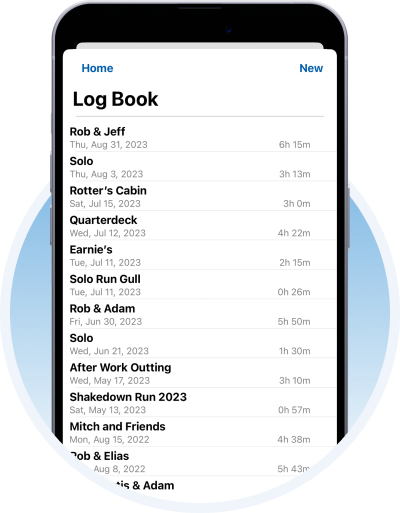
increase resale value

improve critical components warranty management

enhance transparency and tracking for boats with multiple partners
Boating suite use cases, comprehensive vessel profile management.
Utilize the detailed boat information (make, model, year, capacities, dimensions, etc.) to create a comprehensive vessel profile. This can be invaluable for insurance purposes, maintenance planning, and resale.
Provides a quick reference for all relevant boat details, simplifying processes like insurance claims or selling the boat.
Engine Performance Monitoring
With data on engine horsepower, oil, and filter changes, users can monitor and optimize engine performance. This could include tracking changes in performance over time and planning preventive maintenance.
Improved engine longevity and efficiency, leading to cost savings.
Battery Health and Replacement Scheduling
Track battery brand, model, and purchase date to predict and schedule replacements.
Prevents battery failures during critical moments and ensures optimal power supply reliability.
Fuel Efficiency Analysis
Enhance the fuel log with data like engine hours and distances covered to analyze fuel efficiency over time. This could involve tracking efficiency per trip or per engine hour.
Helps in identifying patterns in fuel consumption, leading to more efficient use and cost savings.
Expense Tracking for Total Cost of Ownership (TCO)
Expand on the expense log to calculate the total cost of ownership, including all maintenance, fuel, and other boating-related expenses.
Provides a clear picture of the financial commitment of boat ownership, aiding in budgeting and financial planning.
Maintenance and Repair Histories
Use the maintenance log to track all repairs and routine maintenance tasks, potentially linked with specific parts of the boat (like engine or batteries).
This detailed history can be a selling point for potential buyers, demonstrating responsible ownership and care.
Trip Logging for Experience Sharing
Leverage the logbook to not just record trip details but also to share experiences with friends or a boating community, including photos and notes.
Enhances the social aspect of boating and can be used for trip planning and reminiscing.
TESTIMONIALS
User reviews, #1 boating logbook on the app store since 2010.
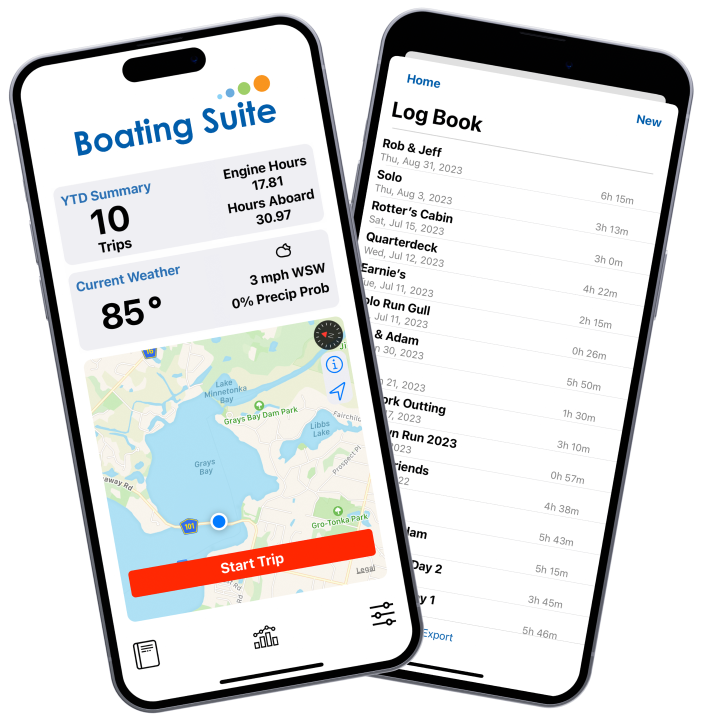
We’re always happy to hear from our customers. Use the form below to send us a message and we’ll make every effort to get back to you within 24 hours.
©2023 Boating Suite. All rights reserved.
Privacy Policy

- Sports & Outdoors
- Miscellaneous
Fulfillment by Amazon (FBA) is a service we offer sellers that lets them store their products in Amazon's fulfillment centers, and we directly pack, ship, and provide customer service for these products. Something we hope you'll especially enjoy: FBA items qualify for FREE Shipping and Amazon Prime.
If you're a seller, Fulfillment by Amazon can help you grow your business. Learn more about the program.

Download the free Kindle app and start reading Kindle books instantly on your smartphone, tablet, or computer - no Kindle device required .
Read instantly on your browser with Kindle for Web.
Using your mobile phone camera - scan the code below and download the Kindle app.

Image Unavailable

- To view this video download Flash Player

Follow the author

Boat Log & Record: The Perfect Small Craft Record Keeper for Cruises, Expenses and Maintenance Paperback – December 12, 2012
- Print length 184 pages
- Language English
- Publisher Marlor Press
- Publication date December 12, 2012
- Dimensions 8.5 x 0.5 x 11 inches
- ISBN-10 1892147289
- ISBN-13 978-1892147288
- See all details

Customers who viewed this item also viewed

From the Publisher

Editorial Reviews
"Can help boaters get their times and boats better organized and keep a personal record of their adventures afloat and their voyages." — Northern Breezes "One of the most complete cruise preparation guides I've seen. An inexpensive way to get yourself organized." — Boating "The ultimate boat addict's Boat Book." — Minneapolis Star Tribune "This great sea story is more than just a fine adventure. Bree packs the book with the legends that have created such a special aura around the lake, from famous shipwrecks, lost gold mines and great storms to the almost unbelieveable story of the world's richest silver mine. Not to be missed." — Flint (MI) Journal on Broken Seas "Tabbed sections make this log easy to use as a complete record of your boat and voyages. Daily navigational data...may be useful during fog or rough weather. Practical information and checklists make this book indispensible for both sailors and power boaters." — The Ensign , Magazine of the United States Power Squadrons "Anyone with a small boat and a short memory will enjoy this useful compendium. Collecting and organizing the specs, data, cruising log. . . . is a challenge. Bree makes it seem easy, with a logical format to help you write in notes and keep track." —Bill Martell, Cruising World "This sturdy book is at least one step toward worry free cruising." — Offshore
From the Author
From the back cover, about the author, product details.
- Publisher : Marlor Press; Fourth Edition, Fourth edition (December 12, 2012)
- Language : English
- Paperback : 184 pages
- ISBN-10 : 1892147289
- ISBN-13 : 978-1892147288
- Item Weight : 1.16 pounds
- Dimensions : 8.5 x 0.5 x 11 inches
- #290 in Sports Equipment & Supplies (Books)
- #1,875 in Boating (Books)
About the author
Marlin bree.
Marlin Bree is the author of numerous nonfiction books including Bold Sea Stories, Wake of the Green Storm, In the Teeth of the Northeaster, Broken Seas, Call of the North Wind, the Boat Log & Record., and, with Gerry Spiess, Alone Against the Atlantic. He collaborated with Loris Bree, a former speech and language pathologist who worked with disadvantaged children, to develop children's books including Kid's Magic Secrets, Kid's Trip Diary, and Kid's Travel Fun Book.
Customer reviews
Customer Reviews, including Product Star Ratings help customers to learn more about the product and decide whether it is the right product for them.
To calculate the overall star rating and percentage breakdown by star, we don’t use a simple average. Instead, our system considers things like how recent a review is and if the reviewer bought the item on Amazon. It also analyzed reviews to verify trustworthiness.
- Sort reviews by Top reviews Most recent Top reviews
Top reviews from the United States
There was a problem filtering reviews right now. please try again later..
Top reviews from other countries
- Amazon Newsletter
- About Amazon
- Accessibility
- Sustainability
- Press Center
- Investor Relations
- Amazon Devices
- Amazon Science
- Start Selling with Amazon
- Sell apps on Amazon
- Supply to Amazon
- Protect & Build Your Brand
- Become an Affiliate
- Become a Delivery Driver
- Start a Package Delivery Business
- Advertise Your Products
- Self-Publish with Us
- Host an Amazon Hub
- › See More Ways to Make Money
- Amazon Visa
- Amazon Store Card
- Amazon Secured Card
- Amazon Business Card
- Shop with Points
- Credit Card Marketplace
- Reload Your Balance
- Amazon Currency Converter
- Your Account
- Your Orders
- Shipping Rates & Policies
- Amazon Prime
- Returns & Replacements
- Manage Your Content and Devices
- Recalls and Product Safety Alerts
- Conditions of Use
- Privacy Notice
- Your Ads Privacy Choices

Easy Online Boat Maintenance Management
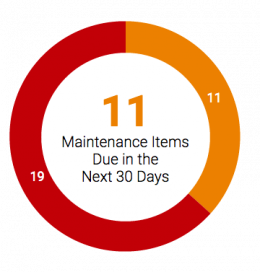
Your Boat Dashboard Makes it Easy to See What Needs Your Attention
Peace of mind on the water, knowing your boat is operating at it's best, sign up for a free 7-day trial - then just $49.00 per year.
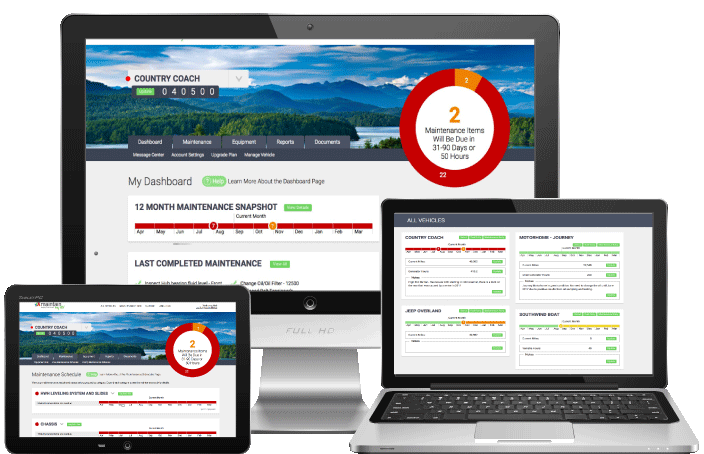
Available on
Less time to worry, more time to sail. enjoy yourself.
Clear your mind of the boat chores by putting all of them in TheBoatApp and be in control!
See how it works.

A sea of features
With logbook, inventory, documents, checklists, tasks and alerts over cloud services, TheBoatApp, powered by TheBoatDB, is all about having the best experience in managing your boat efficiently and effectively
Search & Explore
Compare & benchmark.
Boat comparison & benchmarking made easy! Benchmark your boat versus the “competition” or simply compare side-by-side. Spot differences easily among many boats and benchmark performance ratios!
Save Benchmarks
No advertising.
You may not be fond of ads but they help pay the bills. Advertising will be removed throughout the platform when you subscribe to Gold.
' '
GB per boat
Your data need space to grow! Go ahead and store your documents, log-records, photos, manuals, etc. Your marine life in a single repository!
Custom fields
Custom categories
Custom locations
Google Maps
Your route and trips are overlaid in Google Maps.
Let us see how the weather looks, and the winds are blowing, around your location of course!
Support priority
We strive to support you, but we have to prioritize the Gold users that support us.
Feature requests priority
Contribute actively into shaping the features roadmap. If we have not already implemented to it, propose your favourite feature!
Platform support
Operating such a massive online platform 24/7, along with pairing Android and iOS apps, is far from an easy task. Gold pays for servers and other costs.
Checklists from TheBoatApp community. Proven workflows to get things right!
A wide variety of checklists, available for you to pick and use out of the box! You like one, simply follow it and always have the latest version. You want to customize one, simply copy it and edit away to your liking!
Things to do and check on boarding yacht, before leaving mooring.

A list of reccomended to have tools and accessories in your boat toolbox!

To-Do list for checking your boat and gear prior to going cruising!

A list of items to have in your Survival Kit (...and hope to never have to use them!)

A list of Sea and Sail Movies, TV Series and Documentaries.

Try Pro FREE for 90 days
No payment card required.
FREE Forever
Well…, it’s free! Really, no payment needed, ever!
€19 per licence, billed yearly
All Free features and yet some more,
€49 per licence, billed yearly
All Essentials features PLUS more,
€99 per licence, billed yearly
All Plus features and much more for PROs,
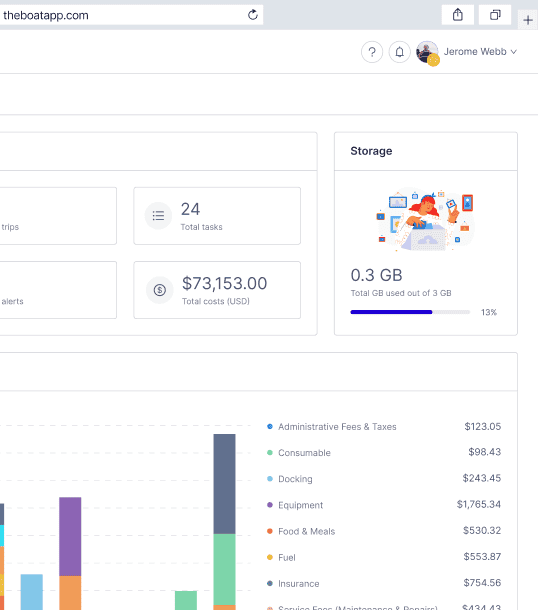
One all-seeing app for all your marine data!
A place for everything and everything in its place, resulting in safety onboard, peace-of-mind to cruise, and a higher overall & reselling value!
Join our community
Fellow mariners and platform enthusiasts live here! Join in to make questions, exchange views and ideas about existing and future features, and much more!

IMAGES
VIDEO
COMMENTS
Change the oil and filter of the engine. Clean the thru-hull. Clean the siphon break. Fill up coolant and antifreeze if needed. Check pump, impeller, and raw water strainer. Finally, let's see the annual maintenance of your sailboat's engine: Test the batteries. Check the diesel tank for damages.
Download Maintenance Log Template. Captain's Log. The workbook contains worksheets for: Deck Log - includes calculations for entry Daily Time Underway as well as a summary of Total Hours Underway, Total Days Underway, and Total Miles Marina and Anchorage Log - includes calculations for each entry for Total Cost, and a summary breakdown by # of Stays, # of Days, and Total Cost by type (Marina ...
UPDATE 13/10/2021: Check out the new boat maintenance log feature of Plan M8. What is a maintenance log book? A vessel maintenance log book is a rather simple, albeit very useful document. It contains a list of all the actions that need to be taken in order to keep your boat in perfect condition. ...
Maintenance Log Book - Spiral Bound Book - Blue Book with Flexible Cover - 100 Pages - Ideal Boat Journal, Sailing Notebook, Boater Logbook Gift, Yacht Captain Record Book, Sailing. 43. $2698. Save 10% with coupon. FREE delivery Thu, Feb 8 on $35 of items shipped by Amazon. Or fastest delivery Mon, Feb 5.
And that care and attention won't help if it isn't comprehensive. That's why we've put together this ultimate sailboat maintenance checklist to help keep your ship in top condition: Inspect the boat. Survey the bilge, for example. Test the bilge pump and make sure it runs smoothly. Visually inspect the hull. Look for leaks.
The Maintenance Log includes ample space to list vessel specifications, spare part numbers, repairs, and maintenance, as well as space for reference drawings. This boat maintenance log also includes quick reference pages on safety, weather, BIA certification requirements, and more. The Maintenance Log has an attractive, embossed cover made of ...
Keeping a boat maintenance log is an ideal way of reminding owners what needs to be done to a boat and when. Read on for some tips, advice and a sample maintenance log. However keen you may be to work on your boat, organising yourself can be challenging on occasions. Planning routine boat maintenance in advance can really help you in the long term.
As an owner, a maintenance log is a great aid in caring for your boat. Noting the dates of regularly scheduled maintenance items, such as filter changes, and oil and other fluid changes, makes it easier to care for your boat, its engines and its systems. Additionally, unscheduled maintenance, such as battery swaps, sacrificial-anode ...
Tips For Keeping A Great Log. The captain is responsible for the logbook and for ensuring its proper use. Unless otherwise designated, only the captain should make log entries. Entries by authorized persons must not be amended or deleted unless directed by the captain. Make routine entries every hour on the hour.
I also leave a large outside margin for adding dates, notes etc. Daily Log - Sheets. Maintenance Log Book. Starting each day recording the status of each system is a great habit for offshore sailors. We keep ours in the same book as our journal. The format and included fields will be different for each boat depending on its systems.
Spreadsheets. Here is a collection of tools I use to manage my boat. Master Log.xls. Captains log to keep track of sea time towards the captain's license. Maintenance log of work completed. Recurring maintenance schedule. Radio log. Templates of the electronic logs to be printed out. I keep these hard copies as an easier way to write notes as ...
Refer to the chart to check maintenance items before every outing and at every 20, 50, and 100 hours of use. Seasonal boaters should consult the chart before every layup. With our chart as your guide, your rig will stay like new for longer and command top price at resale or trade-in time, particularly if you keep records of what you've done and ...
Boat Maintenance Log Book.xlsx. Engine service log ,Routine checks,Due date 1.,Inspect bilge for water,Every visit,0,0,0 2.,Inspect levels of engine oil, collant, trans oil,Every second Sunday*, (* or every ten hours of operation),0,0,0 3.,Inspect contents of Racor fuel filter,Every second Sunday*, (* or every ten hours of ope...
BOAT MAINTENANCE LOG BOOK (Comprehensive Boat Repair Book, Sailboat Maintenance Book, Logbook To Record Routine Maintenance Tasks, Work Log, Fuel Log, Spare Parts List, Suppliers' Contacts and Repair Shop Contacts). Keeping track of all the maintenance that a boat needs to be taken to be in good shape is a tremendous job. This log book has put in place a comprehensive list of log sheets for ...
3. $4898. Save 10% with coupon. FREE delivery Wed, Feb 21. Or fastest delivery Fri, Feb 16. Small Business. Boat Log Book: Keep Record of Cruising Activity, Maintenance and Service Records, Fuel Records, On Board Equipment, Expenditure Record, Re-fitting ... Font, Easy to Use, Great Gift for Boater. by Wilton Watch.
2,290. Catalina 310 Quincy, MA. Apr 17, 2022. #2. I have a log book for maintenance that I update as repairs and regular maintenance are completed. The Admiral keeps the cruise log book with times, places, distances and weather. I bought them 17 years ago when I bought the boat. They are available in most marine supply houses.
Everything you need to keep track of routine maintenance. Log in all of your boat's equipment, purchase dates, serial numbers, idiosyncrasies and servicing in the sufficient space provided in this maintenance log. Provides an easy way to track maintenance history and repair records in a single source. Key Features
The log contains one entry per service item, where each item has an associated number of hours and/or number of months between service intervals. For example, in the screenshot below, the cells highlighted in blue indicate the main engine oil and filter are due to be changed every 6 months or 375 hours. This information is entered per service ...
Boating Suite is your all-in-one DIY Boat & Yacht Management App that boasts a modern and scalable interface that natively supports all iPhone screen sizes as well as iPad and newer Macs with M-series processors. ... Use the maintenance log to track all repairs and routine maintenance tasks, potentially linked with specific parts of the boat ...
As useful for skippers of powerboats as those of sail, the Boat Log & Record is a complete resource to keep track of everything boat owners need to know about their boats and their maintenance. In its large 184 pages, it is actually many books in one (you can choose and use your own categories): A pleasure boat log, including GPS waypoints, time, speed, distance, and nav notes; boat expenses ...
DD/MM/YYY: P / S SERVICE(S) COMPLETED: COMPLETED BY WORK ORDER # Print more pages at: www.AmericanMarineNY.com/LOG (631)543-6433 QUALITY SERVICE = SAFER BOATING
Membership Includes all these features: Easy to Follow Dashboard. Track Warranty Information. Predefined Schedules for Select Equipment. Online Maintenance & Fuel Log. Automatic Email Alerts and Reminders. Easy to Read, Well-Organized Reports. Upload Documents or Photos for Record Keeping (1 GB of space) Track up to 3 Vehicles (RV, Car, Boats ...
One all-seeing app for all your marine data! A place for everything and everything in its place, resulting in safety onboard, peace-of-mind to cruise, and a higher overall & reselling value! Get started. The Ultimate Boat/Yacht Management and Maintenance APP. Intuitive Interface providing separate modules, once for each needed function.